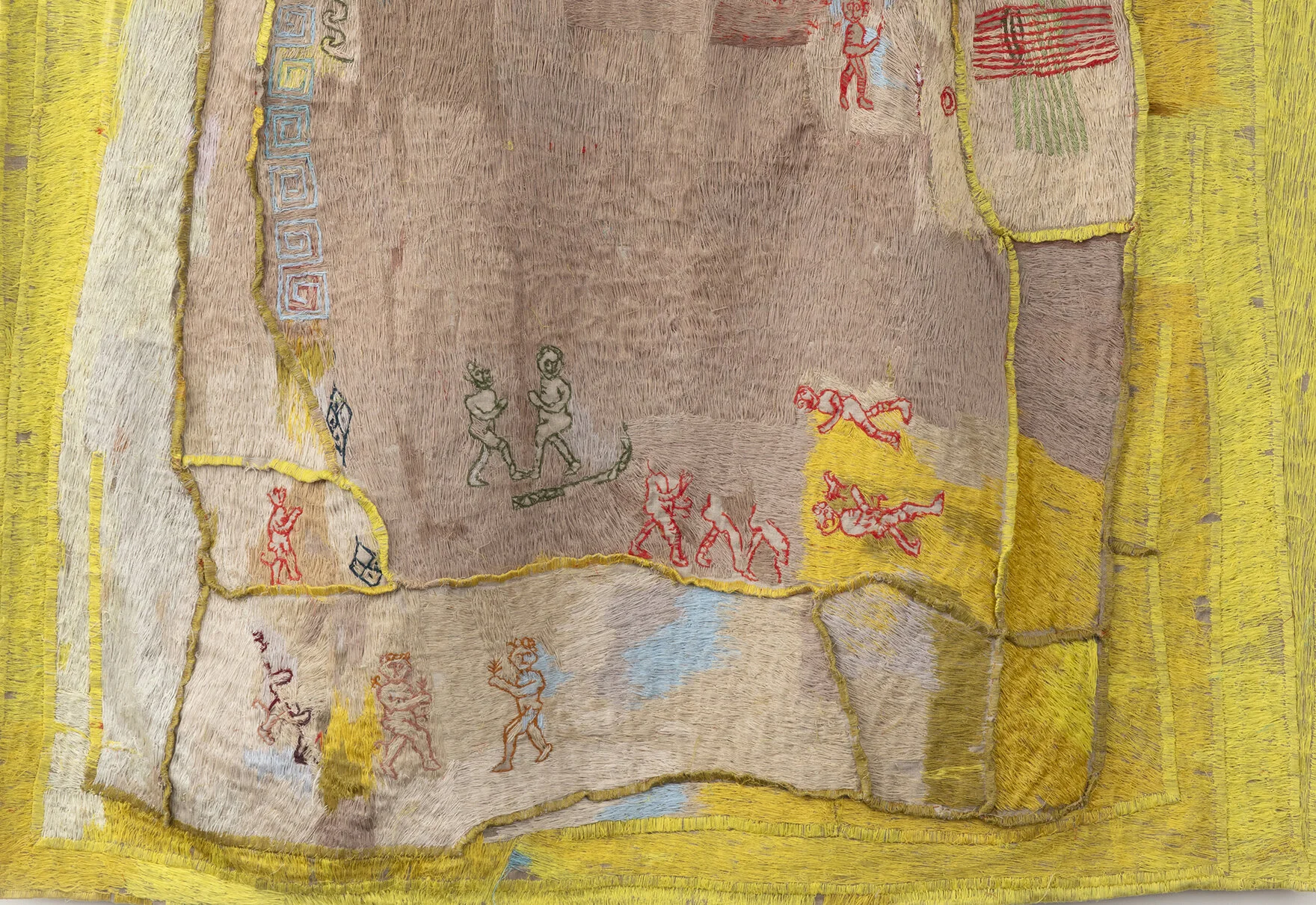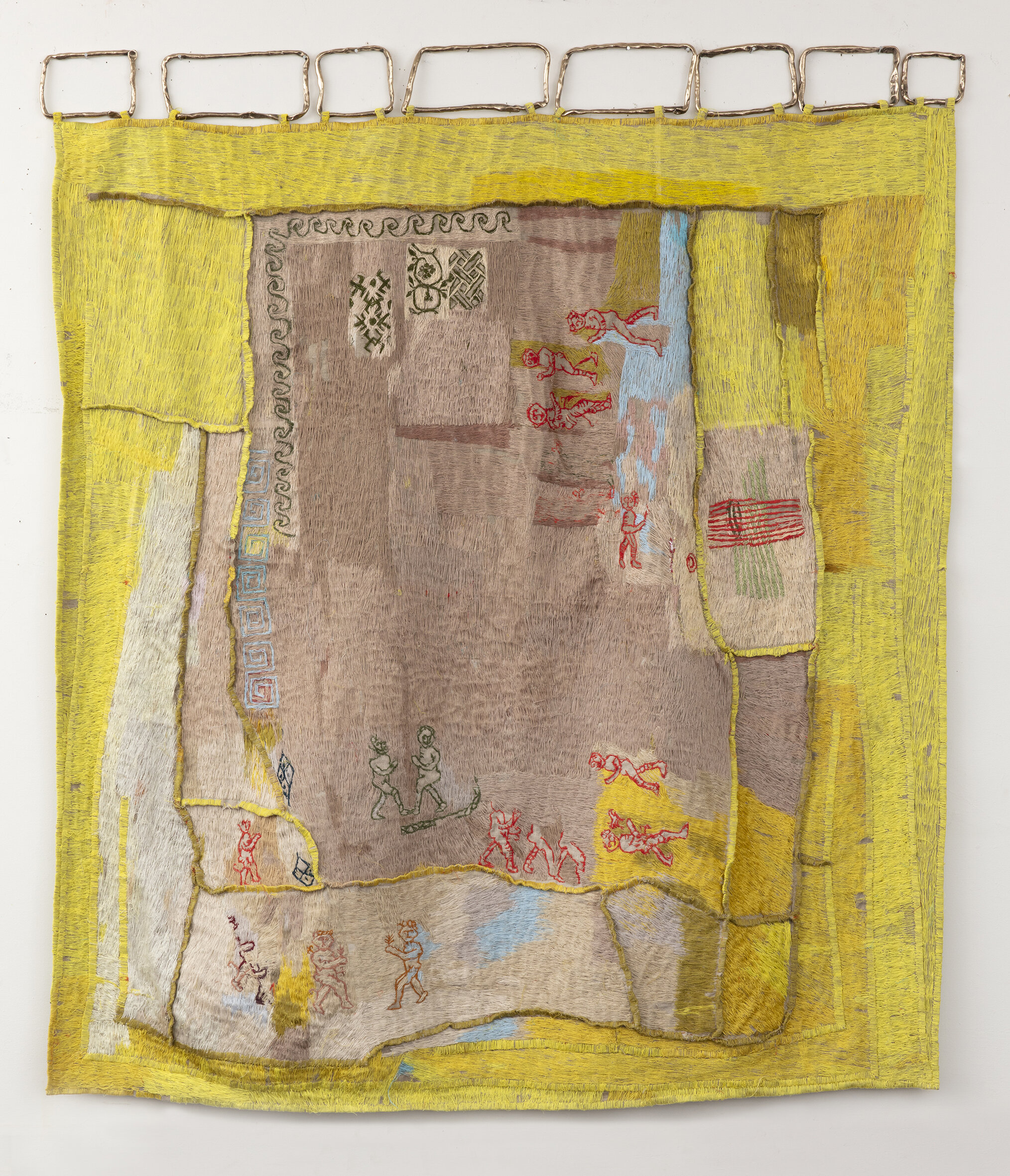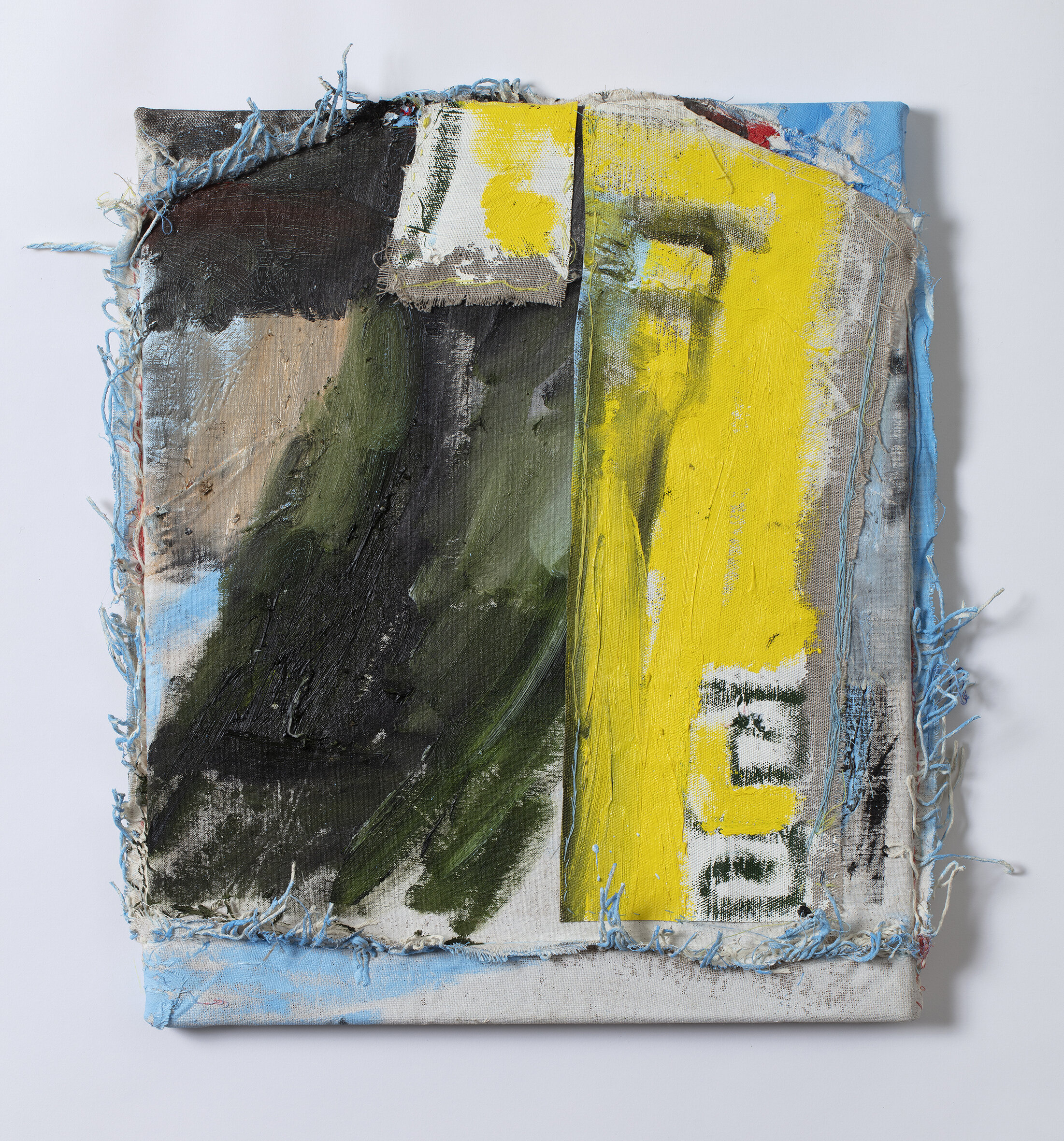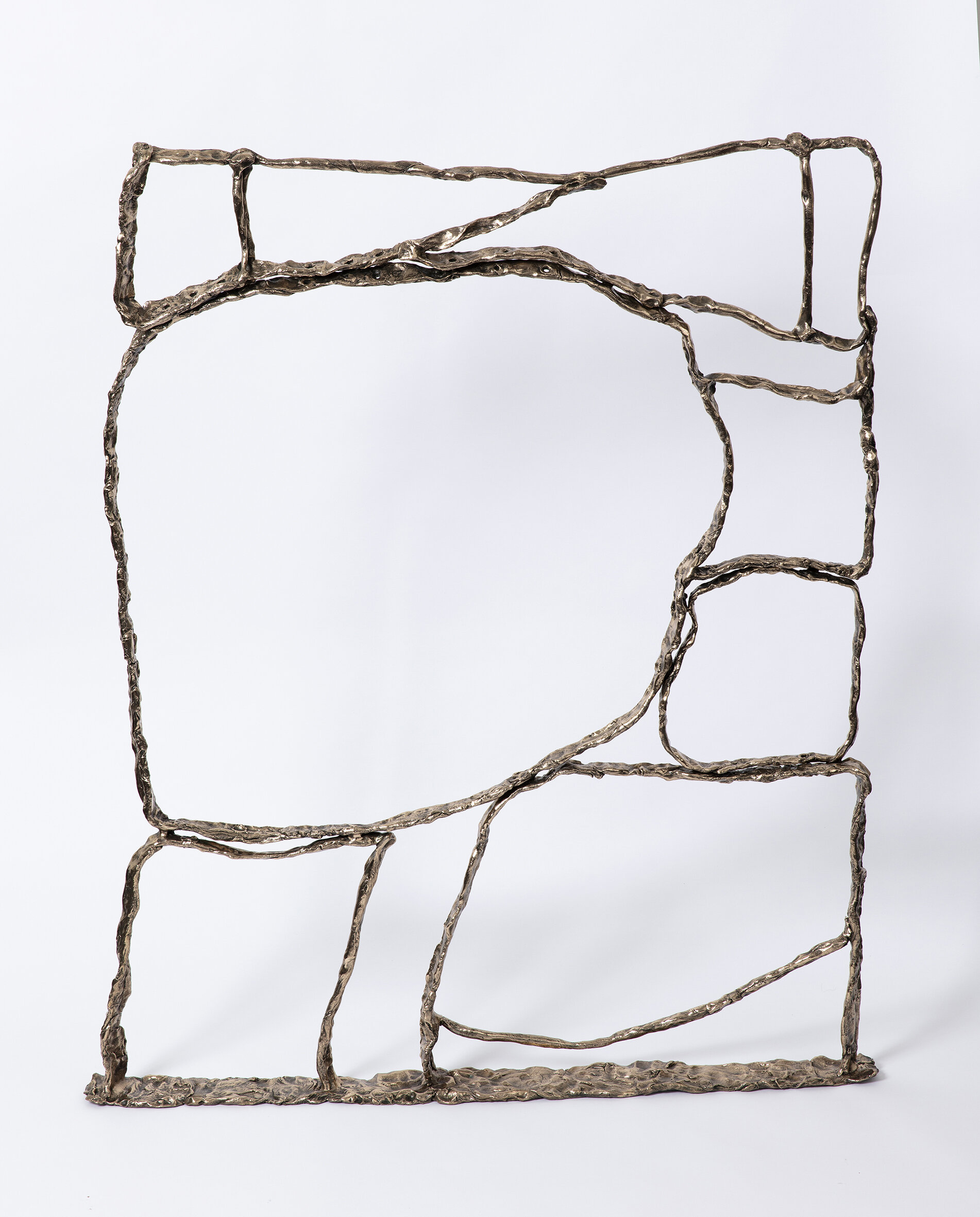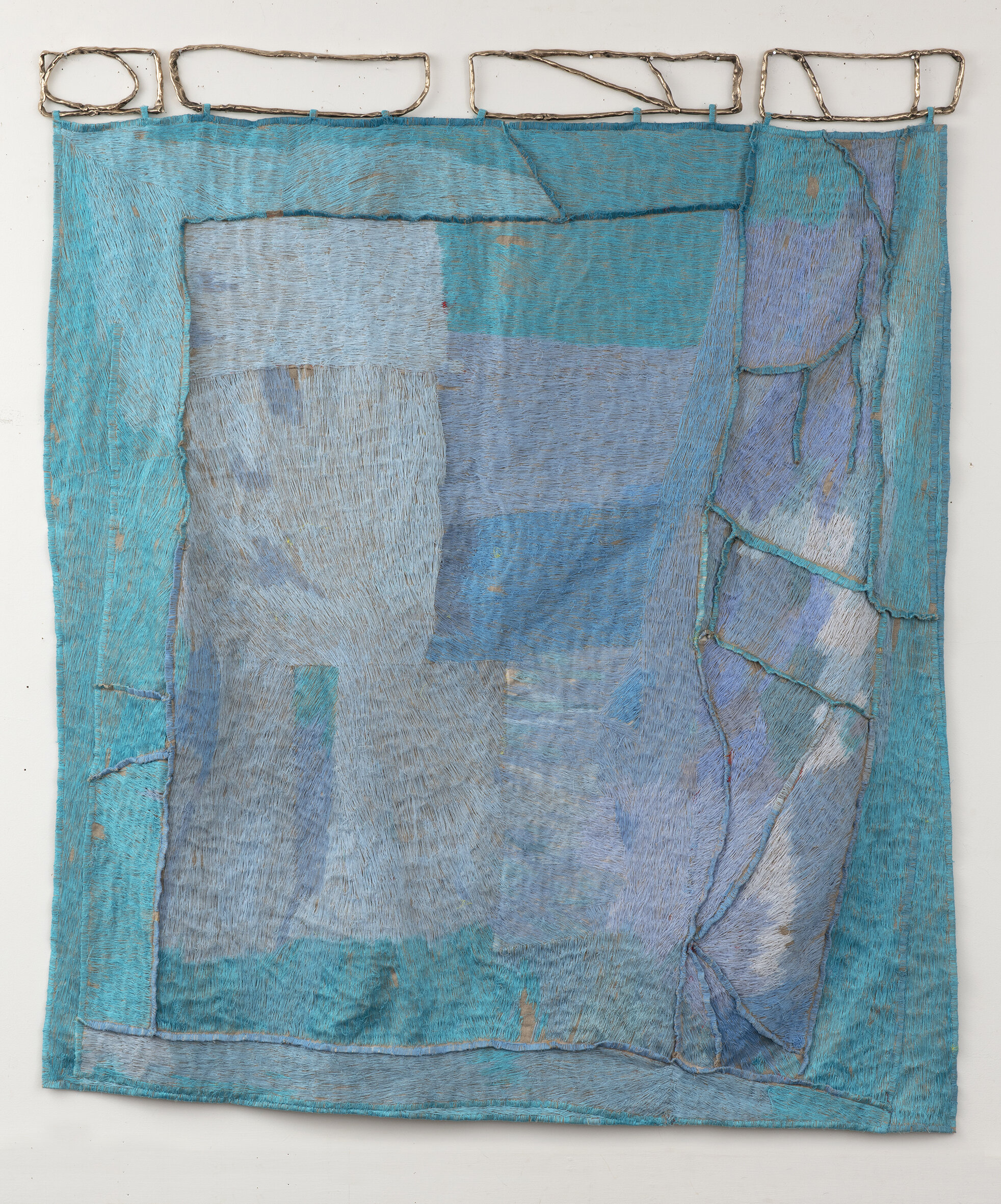Teelah George
THE BOXER
IS THE LOVER WITH THE FLOWER
IS THE NAKED MOTIF
CATALOGUE ESSAY | GALLERY 9 | August 2020
With hand and thread, Teelah George chisels open apertures between materiality and the immaterial. She explores how medium can manifest both presence and absence, her embroideries, paintings and bronzes incarnating lost histories and departed memories. In her ongoing examination of material culture and objecthood, the artist draws from museum collections and archives in Berlin, London, Paris and Belfast during recent travels, as well as the Western Australian Historical Society, to recontextualise mediums and motifs within a fertile framework of ideas.
Through the labour-intensive act of embroidery – at odds with our high-speed society – notions of time collide with material and memory, repetition and labour. Positioning her own practice alongside the domestic craft of needlework, George posits stitching and sewing as pulpits for personal histories, as well as tools for wisdom, skill development and guidance shared within and between generations. Closely engaging with the ‘sampler’ – a piece of embroidery traditionally used as a demonstration of skill and an instrument of learning – she unpicks the valencies of female virtue and domesticity sewn deep within this tradition. Stitching here becomes a subversive act. Her embroideries are unbridled, dangerous; almost aggressive, channelling the physicality of the craft: needles, cuts, callouses. The delicate florals, didactic letters and prim patterns of conventional samplers are supplanted by a Frankenstinian patchwork of dense colouration, gestural abstraction and deformed decoration. Never following a design or preconception, George works responsively, splicing shapes and reworking embroidered surfaces. Snaking through her compositions are seams, trims and hems, a tactual circulatory system that crosses temporal bounds to offer new ways of thinking about creative and generative practices.
These are elegiac portraits of time and transformation; material, mortality and mutation. For George, there is a ‘beautiful absurdity’ in the labour-intensive process of embroidering samplers, which were liminal and fallible fabrics not meant to be consumed artistically and not necessarily intended to endure. Intrigued by deteriorated samplers encountered in museum collections, the artist visualises volatility through aged hues evoking rust, bruising and patina. The inherent vice of the material becomes a thing of beauty, of poetry.
George is interested in the mistakes and mishaps of the sampler, the moments where the humanity of the maker is exposed. Fascinated by the classic motif of 'the boxer', she explores how this figure with upturned arm has morphed over the centuries through the replication of error – its native state being a man offering a flower to his lover. In the show’s title piece, the artist memorialises the ‘mistake’ in her renditions of the boxer, where headless figures, mutated forms and disembodied limbs enact a kind of reverse survival of the fittest.
The immediacy of George’s brush is an antidote to the laborious practice of embroidery. In her paintings she incorporates remnants from previous works, cannibalising them, painting over them, ripping them from their stretcher, building within this material economy a stockpile of stories. Viewing these works is an act of excavation. Layers of paint unravel at the edges, unearthing previous incarnations and eroded narratives, while buried texture haunts the works’ surfaces with spectral persistence.
An unlikely companion to George’s embroideries and paintings is the medium of bronze. Created from wax formations that willingly evince the artist’s hand, these shiny skeletal appendages recast the gendered hierarchy of materiality. Bronze is, historically, permanent and patriarchal, standing firm against the impermanence and domesticity of textiles. Yet George flips its status as a monumental medium by enlisting bronze as a structural support for her embroideries. She recalibrates material differences in vulnerability, giving gravitas to the historically humble and perishable pursuit of needlework. Challenging its own inherited material status, the twisted bronze framework of The Harp feels at once frail and fortified, a ribcage for her embroideries that longingly echoes their lines and forms.
At a time where materiality takes form within a thing-based capitalist ideology or, increasingly, subsumed by virtuality and digitisation, George asks us to take a closer look at the potential of medium and mark. She reweaves the threads of history into a contemporary cartography that summons the forgotten and subverts tradition, quietly and profoundly distilling poesy from the prosaic.
